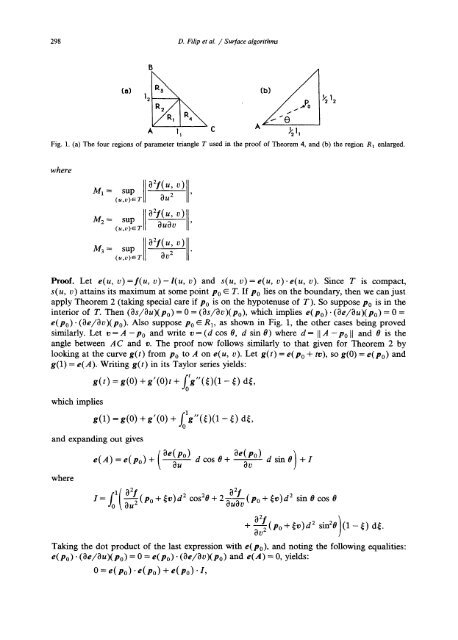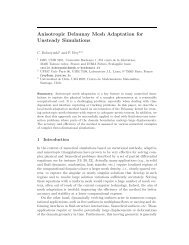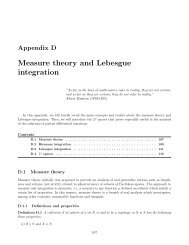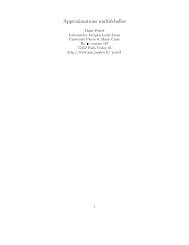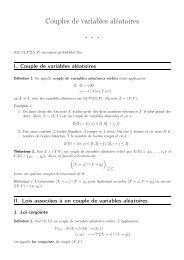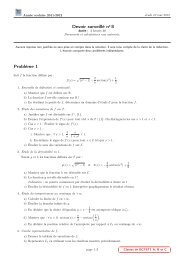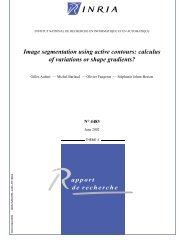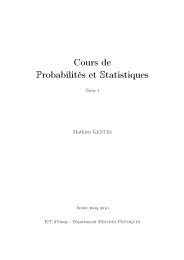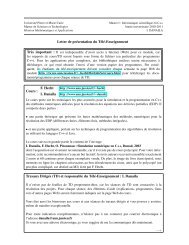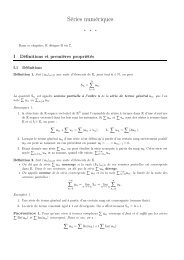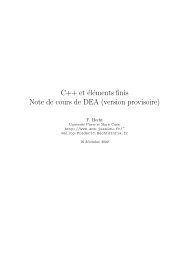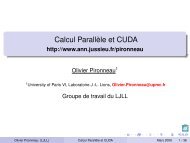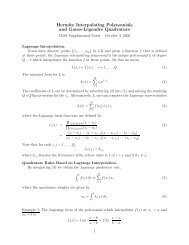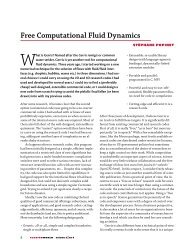Surface algorithms using bounds on derivatives
Surface algorithms using bounds on derivatives
Surface algorithms using bounds on derivatives
You also want an ePaper? Increase the reach of your titles
YUMPU automatically turns print PDFs into web optimized ePapers that Google loves.
298 D. Filip et aL / <str<strong>on</strong>g>Surface</str<strong>on</strong>g> <str<strong>on</strong>g>algorithms</str<strong>on</strong>g><br />
(a)<br />
B<br />
R 2<br />
A C A ~11<br />
Fig. 1. (a) The four regi<strong>on</strong>s of parameter triangle T used in the proof of Theorem 4, and (b) the regi<strong>on</strong> R 1 enlarged.<br />
where<br />
= 0 2i( u, o)l<br />
M1 (u,v)ETSUp an 2 ] ,<br />
sup I°V(u'°),<br />
(u,o)~T OUOO<br />
343= sup<br />
L<br />
O2f(u' v). I<br />
(u,v)~T 0V2 l"<br />
Proof. Let e(u, v)=f(u, v)-l(u, v) and s(u, v)=e(u, v).e(u, v). Since T is compact,<br />
s(u, v) attains its maximum at some point P0 ~ T. If P0 lies <strong>on</strong> the boundary, then we can just<br />
apply Theorem 2 (taking special care if P0 is <strong>on</strong> the hypotenuse of T). So suppose P0 is in the<br />
interior of T. Then (3s/Ou)(po) = 0 = (3s/Ov)(po), which implies e(po) . (Oe/Ou)(Po) = 0 =<br />
e(po). (3e/Ov)(po). Also suppose Po ~ R1, as shown in Fig. 1, the other cases being proved<br />
similarly. Let v=A-Po and write v=(d cos 0, d sin 0) where d= IIA -P0 II and 0 is the<br />
angle between A C and v. The proof now follows similarly to that given for Theorem 2 by<br />
looking at the curve g(t) from Po to A <strong>on</strong> e(u, v). Let g(t) = e(Po + tv), so g(0) = e(Po) and<br />
g(1) = e(A). Writing g(t) in its Taylor series yields:<br />
which implies<br />
,(t) =,(0) + g'(0)t +<br />
g(a) = g(0) + g'(0) +<br />
and expanding out gives<br />
where<br />
e(A) = e(Po) + ( Oe(po)<br />
Ou<br />
1( 02! (<br />
I = fo --'--~ Ou<br />
fotg"(f)(1 ~) d~,<br />
fo'g"(f)(1 f) d~,<br />
d cos 0 + )(Oe'P°-----------" d sin OI ~ + I<br />
0v /<br />
02I<br />
Po + ~v) d2 c°s20 + 2 3--~v (Po + t;v) d2 sin 0 cos 0<br />
+ Ov 202Izkpo + ~v)d 2 sin20)(1 -- ~) d~.<br />
Taking the dot product of the last expressi<strong>on</strong> with e(po), and noting the following equalities:<br />
e(Po) . (8e/au)(po) = 0 = e(Po) . (3e/3v)(po) and e( A) = 0, yields:<br />
O=e(Po) .e(po) + e(Po). I,


